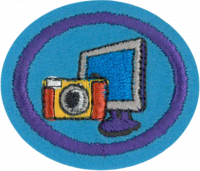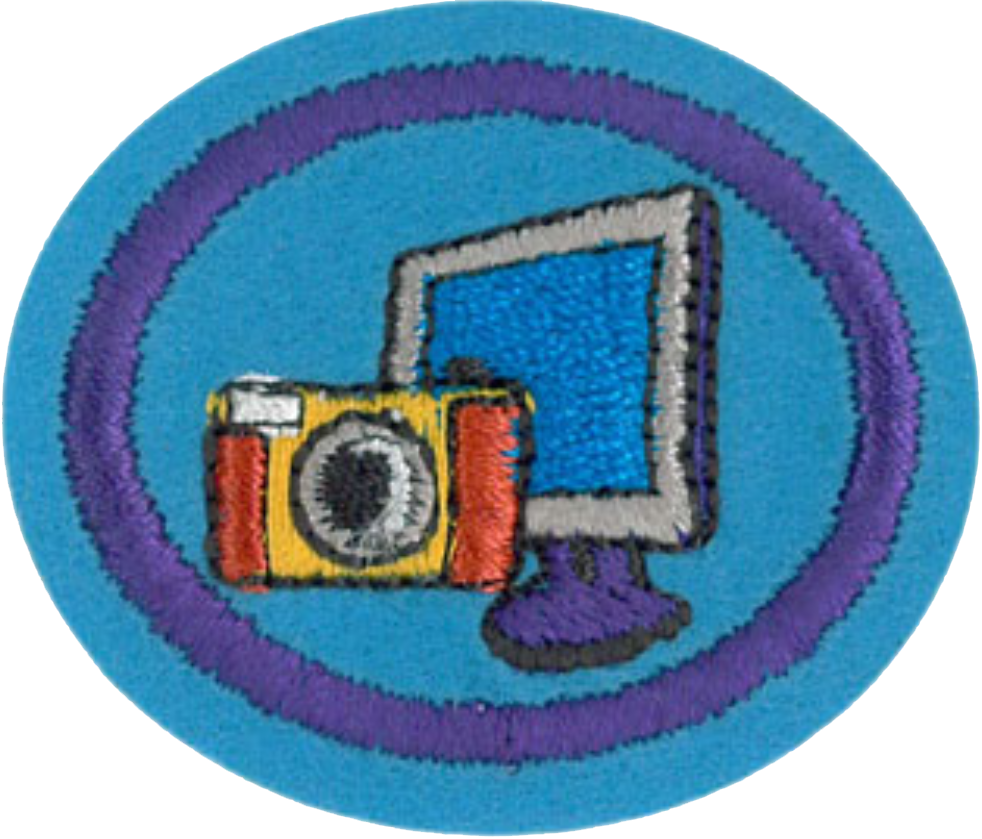Difference between revisions of "AY Honors/Digital Photography/Requirements"
Jomegat bot (talk | contribs) m (Add RequirementsHeader) |
m (- Category of Honor Requirements) |
||
| (10 intermediate revisions by 3 users not shown) | |||
| Line 1: | Line 1: | ||
| − | < | + | {{HonorSubpage}} |
| − | + | ||
| − | + | <section begin=Body /> | |
| − | + | ||
| − | + | <b>1. <section begin=req1 /><noinclude><translate><!--T:1--> | |
| − | + | </noinclude>Explain the following: | |
| + | <noinclude></translate></noinclude><section end=req1 /></b> | ||
| + | |||
| + | :<b>a. <section begin=req1a /><noinclude><translate><!--T:2--> | ||
| + | </noinclude>The principles of digital camera construction and how a digital camera works. | ||
| + | <noinclude></translate></noinclude><section end=req1a /></b> | ||
| + | |||
| + | :<b>b. <section begin=req1b /><noinclude><translate><!--T:3--> | ||
| + | </noinclude>The effect of light on an image sensor. | ||
| + | <noinclude></translate></noinclude><section end=req1b /></b> | ||
| + | |||
| + | :<b>c. <section begin=req1c /><noinclude><translate><!--T:4--> | ||
| + | </noinclude>How color images are created from the BW image the sensor captures. | ||
| + | <noinclude></translate></noinclude><section end=req1c /></b> | ||
| + | |||
| + | :<b>d. <section begin=req1d /><noinclude><translate><!--T:5--> | ||
| + | </noinclude>What the camera lens does; what focal length means. | ||
| + | <noinclude></translate></noinclude><section end=req1d /></b> | ||
| + | |||
| + | <b>2. <section begin=req2 /><noinclude><translate><!--T:6--> | ||
| + | </noinclude>How are lens aperture and depth of field related? | ||
| + | <noinclude></translate></noinclude><section end=req2 /></b> | ||
| + | |||
| + | <b>3. <section begin=req3 /><noinclude><translate><!--T:7--> | ||
| + | </noinclude>Describe pixels, image resolution, and image size. | ||
| + | <noinclude></translate></noinclude><section end=req3 /></b> | ||
| + | |||
| + | <b>4. <section begin=req4 /><noinclude><translate><!--T:8--> | ||
| + | </noinclude>What are the two types of image compression? | ||
| + | <noinclude></translate></noinclude><section end=req4 /></b> | ||
| + | |||
| + | <b>5. <section begin=req5 /><noinclude><translate><!--T:9--> | ||
| + | </noinclude>Name and describe three types of image formats. | ||
| + | <noinclude></translate></noinclude><section end=req5 /></b> | ||
| + | |||
| + | <b>6. <section begin=req6 /><noinclude><translate><!--T:10--> | ||
| + | </noinclude>Give the principal uses of photography: | ||
| + | <noinclude></translate></noinclude><section end=req6 /></b> | ||
| + | |||
| + | <b>7. <section begin=req7 /><noinclude><translate><!--T:11--> | ||
| + | </noinclude>Take pictures illustrating at least eight of the following techniques. Use comparison pictures for illustration: | ||
| + | <noinclude></translate></noinclude><section end=req7 /></b> | ||
| + | |||
| + | :<b>a. <section begin=req7a /><noinclude><translate><!--T:12--> | ||
| + | </noinclude>Framing. | ||
| + | <noinclude></translate></noinclude><section end=req7a /></b> | ||
| + | |||
| + | :<b>b. <section begin=req7b /><noinclude><translate><!--T:13--> | ||
| + | </noinclude>Camera Steadiness. | ||
| + | <noinclude></translate></noinclude><section end=req7b /></b> | ||
| + | |||
| + | :<b>c. <section begin=req7c /><noinclude><translate><!--T:14--> | ||
| + | </noinclude>Direction of lighting - front, side, or backlighting. | ||
| + | <noinclude></translate></noinclude><section end=req7c /></b> | ||
| + | |||
| + | :<b>d. <section begin=req7d /><noinclude><translate><!--T:15--> | ||
| + | </noinclude>Quality of light - shade, sunlight, and time of day. | ||
| + | <noinclude></translate></noinclude><section end=req7d /></b> | ||
| + | |||
| + | :<b>e. <section begin=req7e /><noinclude><translate><!--T:16--> | ||
| + | </noinclude>Rule of thirds. | ||
| + | <noinclude></translate></noinclude><section end=req7e /></b> | ||
| + | |||
| + | :<b>f. <section begin=req7f /><noinclude><translate><!--T:17--> | ||
| + | </noinclude>Angle - eye level, high, and low level. | ||
| + | <noinclude></translate></noinclude><section end=req7f /></b> | ||
| + | |||
| + | :<b>g. <section begin=req7g /><noinclude><translate><!--T:18--> | ||
| + | </noinclude>Level horizon. | ||
| + | <noinclude></translate></noinclude><section end=req7g /></b> | ||
| + | |||
| + | :<b>h. <section begin=req7h /><noinclude><translate><!--T:19--> | ||
| + | </noinclude>Distance from subject - fill the frame. | ||
| + | <noinclude></translate></noinclude><section end=req7h /></b> | ||
| + | |||
| + | :<b>i. <section begin=req7i /><noinclude><translate><!--T:20--> | ||
| + | </noinclude>Use of leading lines. | ||
| + | <noinclude></translate></noinclude><section end=req7i /></b> | ||
| + | |||
| + | :<b>j. <section begin=req7j /><noinclude><translate><!--T:21--> | ||
| + | </noinclude>Correct exposure - underexposed, overexposed, and correctly exposed. | ||
| + | <noinclude></translate></noinclude><section end=req7j /></b> | ||
| + | |||
| + | :<b>k. <section begin=req7k /><noinclude><translate><!--T:22--> | ||
| + | </noinclude>Use of flash - proper distance and reflective objects. | ||
| + | <noinclude></translate></noinclude><section end=req7k /></b> | ||
| + | |||
| + | <b>8. <section begin=req8 /><noinclude><translate><!--T:23--> | ||
| + | </noinclude>Learn how to place photos in PowerPoint. Create a PowerPoint presentation showing the pictures you took using the above techniques. <noinclude></translate></noinclude><section end=req8 /></b> | ||
| + | |||
| + | <b>9. <section begin=req9 /><noinclude><translate><!--T:24--> | ||
| + | </noinclude>Using a photo editing program on a computer, show ability to crop, color correct, sharpen, and adjust brightness/contrast to photos. | ||
| + | <noinclude></translate></noinclude><section end=req9 /></b> | ||
| + | |||
| + | <b>10. <section begin=req10 /><noinclude><translate><!--T:25--> | ||
| + | </noinclude>Complete at least three creative photographic projects in a photo editing program; such as a CD cover, a photo scrapbook page, a collage, etc. | ||
| + | <noinclude></translate></noinclude><section end=req10 /></b> | ||
| + | |||
| + | <b>11. <section begin=req11 /><noinclude><translate><!--T:26--> | ||
| + | </noinclude>Have a basic understanding of file organization techniques. | ||
| + | <noinclude></translate></noinclude><section end=req11 /></b> | ||
| + | <section end=Body /> | ||
Latest revision as of 21:55, 20 July 2022
1. Explain the following:
- a. The principles of digital camera construction and how a digital camera works.
- b. The effect of light on an image sensor.
- c. How color images are created from the BW image the sensor captures.
- d. What the camera lens does; what focal length means.
2. How are lens aperture and depth of field related?
3. Describe pixels, image resolution, and image size.
4. What are the two types of image compression?
5. Name and describe three types of image formats.
6. Give the principal uses of photography:
7. Take pictures illustrating at least eight of the following techniques. Use comparison pictures for illustration:
- a. Framing.
- b. Camera Steadiness.
- c. Direction of lighting - front, side, or backlighting.
- d. Quality of light - shade, sunlight, and time of day.
- e. Rule of thirds.
- f. Angle - eye level, high, and low level.
- g. Level horizon.
- h. Distance from subject - fill the frame.
- i. Use of leading lines.
- j. Correct exposure - underexposed, overexposed, and correctly exposed.
- k. Use of flash - proper distance and reflective objects.
8. Learn how to place photos in PowerPoint. Create a PowerPoint presentation showing the pictures you took using the above techniques.
9. Using a photo editing program on a computer, show ability to crop, color correct, sharpen, and adjust brightness/contrast to photos.
10. Complete at least three creative photographic projects in a photo editing program; such as a CD cover, a photo scrapbook page, a collage, etc.
11. Have a basic understanding of file organization techniques.


